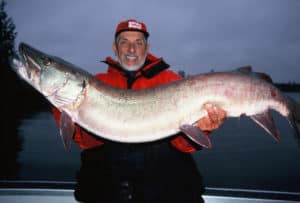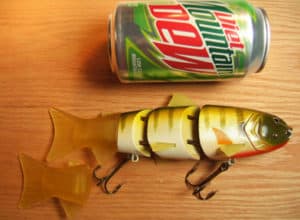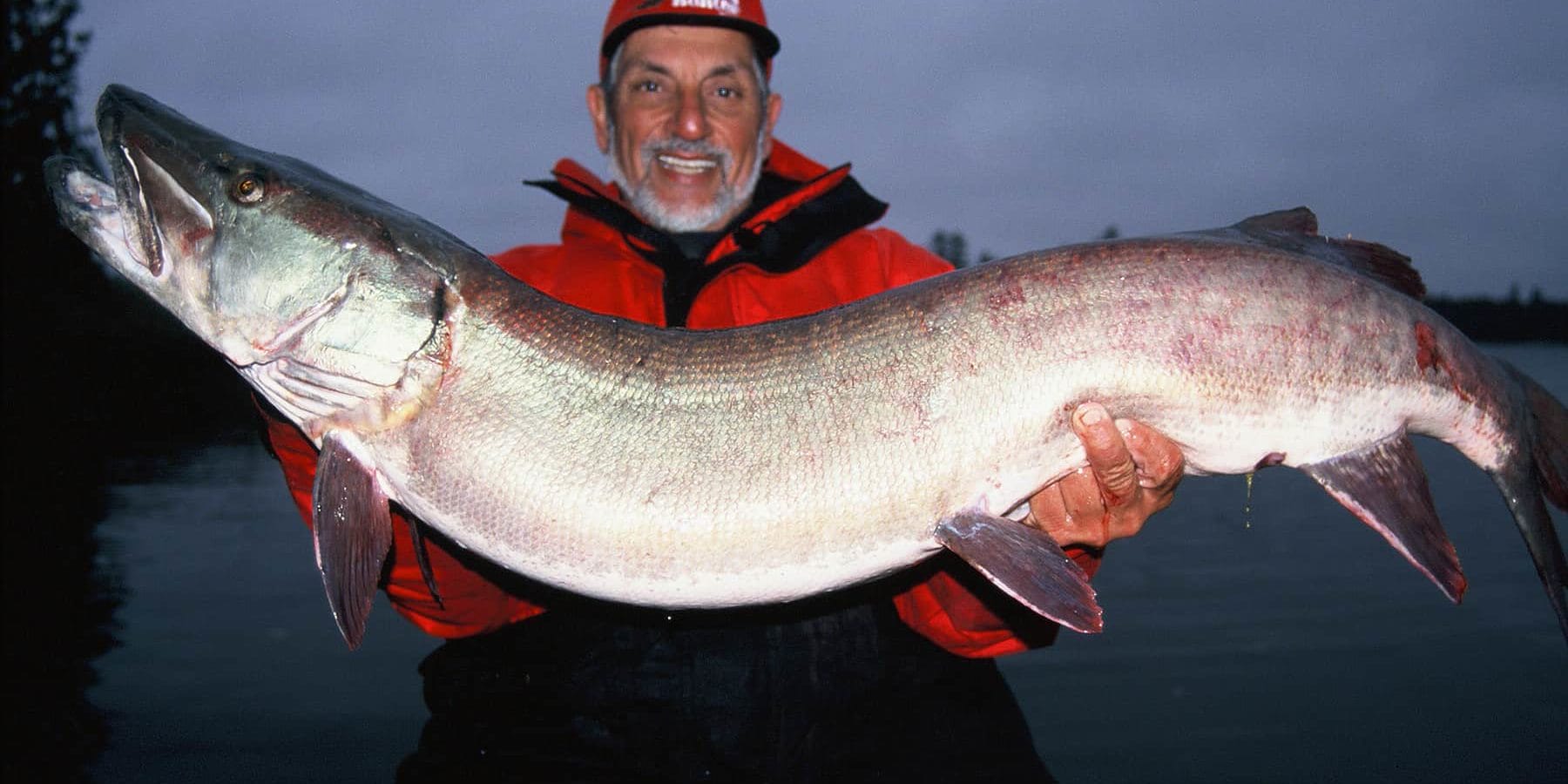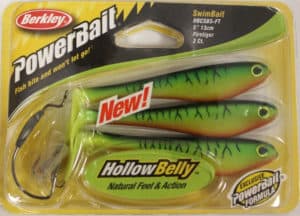by Bob McNally
Muskies are caught on a wide variety of lures and even natural baits throughout the north country in autumn, which arguably is the best time of year to catch the biggest of big fish. But in recent years the remarkable lifelike qualities of high-end swimbaits designed specifically for heavyweight, rugged and hard-fighting muskies have made these lures favorites of muskie men almost everywhere.

Swimbaits have taken the fishing world by storm, and muskie anglers aren’t immune to the craze. Swimbaits are hot baits for autumn muskie fishing.
While there is likely no wrong way to work a swimbait, the following tactics are proven fish-getters wherever muskies roam.
Warm Weather and Weed Beds
During warm, overcast “Indian summer” weather of early autumn, great action from huge muskies often can be had with swimbaits when cast across and around the edges of still-green weed beds, especially very large weed beds.
Usually it’s best to start shallow, tapping the inside edges of weeds first. One angler should work shallow swimbaits right on a weed edge, while a second fisherman fan casts swimbaits to deeper-water weeds.
Sometimes muskies prowl open pockets in big weed beds. They may hold on key ambush turns and breaklines in the cover. Anglers should be sure to wear high-quality polarized sunglasses to locate such key weed bed spots. Then make accurate, careful casts with swimbaits to prime fish-holding locations.
Match The Hatch
The old fishing rule of “match the hatch” has a definite place in muskie angling with swimbaits, and few other lures can so readily duplicate the primary forage on any body of water.
While color, sink rate, lure action and other qualities can make a difference in the effectiveness of swimbaits on muskies, no other factor is more important than lure size. The size swimbait should most closely resemble the size baitfish in the water on which muskie are feeding.
Typically in fall, resident forage is larger than that found in spring. Thus swimbaits in the 5- to 6-inch range work well. Many anglers also prefer paddle-tail swimbaits that shimmy, shake and give off a lot of vibration that muskies seem to target. The Yum Money Minnow and Berkley Hollow-Belly Swimbait are two good ones for fall muskie fishing.
Rock Flats
On rocky lakes, muskie often migrate up to feed on big rock flats bordering deep water. Best tactic is to motor upwind of such spots, making controlled drifts over the hard bottom, while anglers cast diving and slow-sinking swimbaits downwind.
Low-light conditions often are best when working rock flats, so dawn and dusk fishing commonly are most productive. Overcast weather can be good, too, though at times fish can be active erratically through a gray day, rather than just a short time window of early morning or late afternoon.

The Dingo Swimbait is an 8.5-inch double-jointed lure with a fantastic swimming action. This is a slow-sinking swimbait.
Windy weather also can be productive when casting swimbaits on rock flats, as waves push plankton into such areas, which draws baitfish and in turn attracts feeding fall muskies.
In windy conditions, boat control is critical to success. So deft use of electric fishing motors and wind socks are great aids in keeping a boat perfect for best swimbait lure presentations.
Trolling Isolated Islands
Trolling is not allowed everywhere for muskies, but where it’s lawful, pulling swimbaits with a boat around small islands, humps and isolated patches of structure can be deadly.
Often the best islands are sunken ones, not shown on most hydrographic maps. Some are very small (just the size of a modest home or even a living room), with boulders, gravel and chunk rock, and these often hold the biggest of autumn fish. Rocks with still-green weeds can be best, with their tops just a few feet underwater.
Deep water surrounding an island is important, with 15 to 50 foot levels ideal. Some islands are related to shoreline points, particularly on river systems and lakes that have fluctuating water levels.
The best island trolling is had after shoreline weeds have died out, and baitfish, with muskie following, head to rocky islands for cover and protection from predators.
Heavy-test braided line like 100-pound test Power Pro is preferred by many muskie trollers, using steel leaders. Make deep structure passes with varying colors and styles of swimbaits around the deeper edges of islands. Work lures so they just tick the bottom.
Few lures have captured the attention of muskie hounds the way swimbaits have, quite simply because few lures work better during the prime autumn muskie season.
The Union Sportsmen’s Alliance website is designed to provide valuable articles about hunting, fishing and conservation for members of AFL-CIO affiliated labor unions and all sportsmen and sportswomen who appreciate hunting and fishing and want to preserve our outdoor heritage for future generations. If you would like your own story and experience from the outdoors to be considered for our website, please email us at [email protected].





